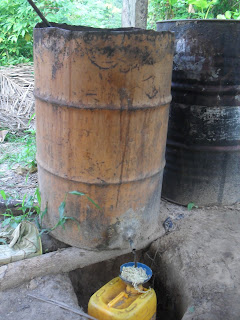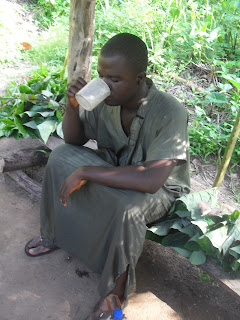DIFFUSION
is: “The process by which an innovation is communicated through certain
channels over time among the members of social system” INNOVATION is: “An idea,
practice, or object perceived as new by an individual or other unit of adoption.
In
1962 Everett Rogers combined the information flow research findings with
studies about the flow of information and personal influence in several fields
including anthropology, sociology and rural agricultural extension work. He
developed a diffusion theory. So although it is classified as an important
theory in the field of communication, diffusion of innovations there has known
practical application in many other disciplines liked sociology, rural
sociology, economics and medical sociology.
Everett
Rogers in his classic work analyzed thousands of diffusion studies in various
disciplines over the years and found similarities. All the studies involved an
innovation communication form one person to another a society of community
setting and the element of time. Communication Channels: Communication is the
process by which participants create and share information with one another to
reach a mutual understanding. It is also the medium by which messages are transferred
from one individual to another. Mass Media channels such as the internet, TV,
Radio, Newspapers and many others are very effective in creating knowledge of
innovations whereas interpersonal channels like face-to-face, telephone,
instant messaging and many more are also effective in forming and changing
attitudes toward a new idea and thus in
influencing the decision to adopt or reject a new idea.
Time:
It is involved in the innovation-decision process, which is the mental process
through which an individual or other decision making unit passes from first
knowledge of an innovation to forming an attitude toward the innovation to a
decision to adopt or reject, to implementation of the new idea, and to
confirmation of this decision. An individual seeks information at various
stages in the innovation-decision process in order to decrease uncertainty
about an innovation’s expected consequences. Another way time involved in
diffusion is the rate of adoption which is the relative speed with which an
innovation is adopted by members of a social system. The Social System: This is the fourth main element in the
diffusion of new ideas and it is a set of interrelated units that are engaged
in a joint problem-solving to accomplish a common goal. The members of a social
system may be individuals, informal groups, organizations, and/or subsystems.
The social system constitutes a boundary within which an innovation diffuses.
Diffusion
of innovation has helped in so many ways and many societies have undoubtedly
acquired most of their cultural ideas by diffusion. For example, writing, the
use of numerals, mathematics and many others went through the process of
diffusion of innovation.
Diffusion
of innovation theory states that an innovation (i.e., an idea, new technique, and
new technology) diffuses or spreads through out society in a predictable
pattern. A few people will adopt an innovation as soon as they hear of it other
people will take longer to try something new and still others will take much
longer. The pattern is that of an S-shaped curve. The Innovation: This concerns
itself with why certain innovations spread more quickly than other. Rogers argued that the characteristics which
determine an innovation’s rate of adoption are – its Relative advantage,
Compatibility, Complexity, Trial ability and Observability to those within the
social system. Rogers and other diffusion researchers also identified five
separate innovation-adoption categories into which all people in a society will
fall. These are; Innovators, Early adopters, Early majority, Late majority and
Laggards. Diffusion theory is mostly concerned
with the rate at which innovations spread.
|
.
|
||||
PALM WINE BREWERY AND LOCAL GIN DISTILLATION
Friday, 26 September 2014
DIFFUSION OF THEORY
Monday, 19 November 2012
HISTORY BEHIND PALM WINE TAPPING
Palmwine tapping and alcohol distillation was once a
lucrative and a major occupation for our fore fathers in some farming
communities and villages in West Africa especially in Ghana, Nigeria and
Liberia.
As traditions and customs demand, palm wine and it’s end product
local gin (Akpeteshie) in the days was very paramount and essential in all endeavours.In was used in
performing several functions to project and to promote the rich cultural values
and heritage in the society.
The palm wine and the local dry Gin (akpeteshie) was used as
the medium of communication between the living and the Ominipotent God, the living and the gods, and the gods
and the ancestors for protection and guidance from any calamities and misfortunes
that may have been admonished to the community.
The palm wine and the
local dry Gin, again used part from pouring libation, served during festive
occasions and mournings such as festivals, naming and marriage ceremonies,
funerals, enstoolment of a new chief, used to welcome some important dignitaries
on courtesy calls and many others.
Traditional authorities in some communities in Ghana still
patronized the use of Palm wine in a specially sanctioned days that they observed
in accordance to their traditional calendar like Akwasidae which is observed
every 40 days, Awukudae also observed
every fortnights coupled with purifications during an abomination been
caused by people against the Gods which needs purification to pleased the gods
and ancestors.
PROCESS
DRESSING/ PREPARATION
The process of tapping palm wine in West Africa varies from
country to country. In Ghana the palm tree is first pulled down and this will
be allowed on the ground for five days untouched. Then after the fifth day the
felt palm tree will be dressed by pruning all it branches or the palm fronts.
DRAWINGS
After the pruning the tapper then constructs a rectangular
cavity or hole at the very neck of the
palm tree or between the palm tree and the branches. Inside the rectangular
cavity is a thin narrow hole with connecting a pipe tube that draws the wine
into a pot or a container been placed under it. Thereafter the extraction begins.
The tapper at this stage draws the wine every morning and in
the afternoon apply some heat at the very rectangular constructed cavity to
make it fertile for more drawings the following morning. The collection of the
drawings some times took place twice depending on the fertility of the palm
tree. The drawings continuous until the palm tree becomes unproductive or
barren and this occurred between 30 to 40 days
BOILING
STAGE
Two barrels are used at this stage one containing the
fermented palm wine which will or is put on fire at a very high temperature and
the other filled with water. A connecting pipe is fixed to the two barrels.
Inside the barrel containing the water is a coiled pipe. The essence of this
pipe is to collect or transfer vapour from the high ternperatured barrel into the
barrel filled with water to help cool and condense the vapour from the boiling
palm wine into Gin. The initial collections called soda water will be set aside
for the real Gin.
Moreover the process of palm wine distillation comes with a
lot of by-product which serves as a
source of food and other usage. This includes Mushroom, edible maggot which is locally known as (Akokono) brooms
etc.
Wednesday, 24 October 2012
Subscribe to:
Comments (Atom)





















































